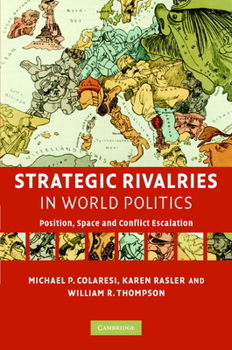Strategic Rivalries in World Politics
Select Format
Select Condition 
Book Overview
International conflict is neither random nor inexplicable. It is highly structured by antagonisms between a relatively small set of states that regard each other as rivals. Examining the 173 strategic rivalries in operation throughout the nineteenth and twentieth centuries, this book identifies the differences rivalries make in the probability of conflict escalation and analyzes how they interact with serial crises, arms races, alliances and capability advantages. The authors distinguish between rivalries concerning territorial disagreement (space) and rivalries concerning status and influence (position) and show how each leads to markedly different patterns of conflict escalation. They argue that rivals are more likely to engage in international conflict with their antagonists than non-rival pairs of states and conclude with an assessment of whether we can expect democratic peace, economic development and economic interdependence to constrain rivalry-induced conflict.
Format:Hardcover
Language:English
ISBN:052188134X
ISBN13:9780521881340
Release Date:January 2008
Publisher:Cambridge University Press
Length:330 Pages
Weight:1.40 lbs.
Dimensions:1.0" x 6.3" x 9.0"
Customer Reviews
0 rating





